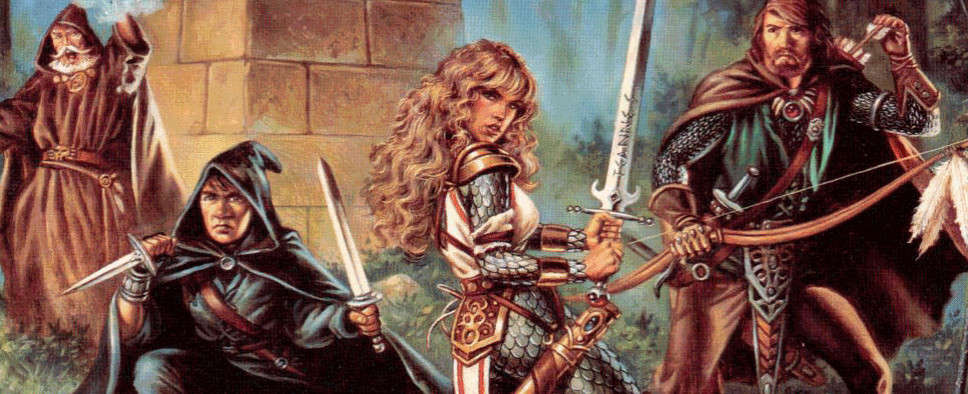Neverwinter Nights Retrospective Review
-
Category: News ArchiveHits: 4007

For those of you not alive at the time, you have to understand that in 1991, you got "online" by using your modem to dial in to one of your ISP's proprietary phone lines, a service for which they charged you by the hour. The AOL materials that came with Neverwinter Nights shows that they were charging $5 per hour for non-peak usage (18:00-06:00) and $10 per hour for peak daytime usage. To save money, those of us who used AOL primarily for e-mail would compose our missives offline, dial in, quickly send and receive, and sign off (AOL eventually created something called a "flash session" for just this purpose). They needed services to keep customers consistently online, paying those hourly rates, and online games were part of the answer. Thus, if you wanted to play Neverwinter Nights for 4 hours between 16:00 and 20:00 some Monday night, you paid $30 (almost $55 in today's money) for the privilege. You could have bought a new game every day for that kind of money. But people happily paid it. When Neverwinter Nights launched, it was capable of supporting 200 online players at a time. Eventually, that number grew to 500. But over 100,000 members had characters. There was a line waiting to get in to the server almost every night. Imagine paying that kind of hourly rate not to play the game but to wait to play the game.
Neverwinter Nights was developed by Stormfront Studios and published by SSI. It uses the same Gold Box engine and graphics that we've seen on this blog a dozen times by now, starting with Pool of Radiance (1988) and most recently in Pools of Darkness (1991). Most of the Gold Box titles were written in-house at SSI, but SSI paid Stormfront to develop the Savage Frontier series, including 1991's Gateway to the Savage Frontier, set in the same basic area as Neverwinter Nights.
Surprisingly few changes had to be made to adapt the Gold Box engine to online play, and at first glance an experienced Gold Box player might not notice any differences. (I'm relying on online testimonials for the following, of course, not having had the experience of playing online myself.) Character creation is virtually identical, including the by-now antiquated rules on race/class combinations and level caps. There's no "modify" command to jack up your statistics, but that's about all that's different.
Each player controlled only one character. During online gameplay, multiple characters showed up in the window where other Gold Box games showed the multiple characters of the single player's party. Players who wanted to adventure together could choose a command to follow a lead character as he controlled navigation around the 3D maps and decided when to camp. During combat, each player controlled his character independently, but combat options are otherwise unchanged.
The game world consists of 29 maps (all first-person, no overland ones like in the Pools series) of the standard 16 x 16 Gold Box size. The core of the game is the city of Neverwinter and its various districts, but other maps allowed you to explore the surrounding wilderness, and the cities of Luskan, Port Llast, and Vilnask among others.
The games even shipped with roughly the same documentation as the other Gold Box titles, consisting of an adventurer's journal and a rulebook. (There are no "journal entries," though.) The setup of the game world is kept purposefully broad: Neverwinter, where the river never freezes, is ruled by the firm but benevolent hand of Lord Nasher. (Reportedly, when AOL chairman Steve Case would play the game, he played as Nasher.) Lately, monsters and raiding parties have been troubling the city, and many people suspect the five pirate captains of Luskan are behind the troubles. Nasher dispenses various quests to adventurers to quell the threats.

